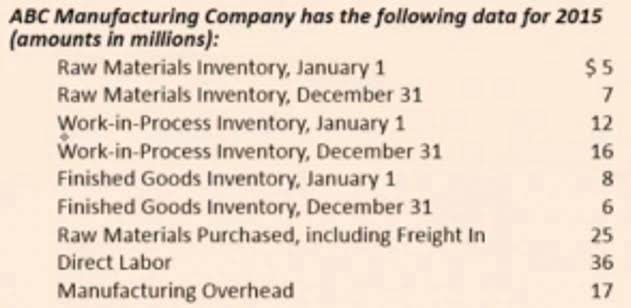
(No offense, accountants.)Essentially, it’s the total income left over after you’ve deducted your business expenses from total revenue or sales. You can find it on your income statement, also known as profit and loss what does a retained earnings statement look like statement. You calculate retained earnings by combining the balance sheet and income statement information. For an example, let’s look at a hypothetical hair product company that makes $15 million in sales revenue.
Create a Free Account and Ask Any Financial Question
It’s crucial to avoid mixing up concept testing with brand testing, advertising testing, and package testing, as is occasionally done. Without the trimmings and puffery typical of advertising, concept testing concentrates on the core concept of the product. Concept testing occurs during the concept generating stage of the new product development process. Concept testing’s concept creation phase includes a variety of options. Concepts might occasionally emerge accidentally as a result of technical advancements.
What is the Statement of Retained Earnings?

And it was one of many things that we decided to do as leaned into delevering. Additionally, over the past several years, we further expanded our developed market exposure through our M&A focus across the US and Europe, all just name a few examples of the key strategic actions we’ve taken to date. Pro forma for the anticipated sale of our India business, attributable AFFO exposure to emerging markets will be approximately 25%. As we’ve communicated in the past, our international investment thesis is two-pronged. Firms can launch products that people need and want by understanding consumer behavior, thereby increasing sales and profitability.
What Are the Main Types of Financial Statements?
- Our writing and editorial staff are a team of experts holding advanced financial designations and have written for most major financial media publications.
- It’s important to note that retained earnings are cumulative, meaning the ending retained earnings balance for one accounting period becomes the beginning retained earnings balance for the next period.
- For this reason, retained earnings decrease when a company either loses money or pays dividends and increase when new profits are created.
- Check out our top picks for the best free accounting software.
- Most often, the company’s management takes a balanced approach.
However, these sales are still included in the total vehicle sales reported by GM for China, as they are considered indicative of the underlying demand for the company’s vehicles in the market. Unrestricted net assets are assets that can be used for any purpose by the organization, without any donor-imposed restrictions. In this case, the donation of stock includes specific requirements on how the shares are to be used, with $8,000,000 to be sold for renovation and $2,000,000 to be retained for supporting current operations.
- Treasury securities refers to the process of the central bank reducing its holdings of these securities in order to influence monetary policy.
- If you look at Europe, they’ve been able to deploy 5G of a large proportion of the population there.
- Naturally, the same items that affect net income affect RE.
- This further helps in making an accurate representation of tasks that are time-based.
- The retention ratio (or plowback ratio) is the proportion of earnings kept back in the business as retained earnings.

Using this finance source too much can create dissatisfaction among members and impact the goodwill of the firm. A company shouldn’t avoid giving dividends payouts just to amass more retained earnings. A retained earnings account is an internal source of financing. Instead of paying money to shareholders or spending it, you save it so management can use it how they see fit. Some benefits of reinvesting in retained earnings include increased growth potential and improved profitability.
Create a free account to unlock this Template
The three major financial statement reports are the balance sheet, income statement, and statement of cash flows. Investors want to see an increasing number of dividends or a rising share price. Although they’re shareholders, they’re a few steps removed from the business. A retained earnings statement is one concrete way to determine if they’re getting their return on investment. By comparing retained earnings balances over time, investors can better predict future dividend payments and improvements to share price.
- Be sure to review third party offers for restrictions or conditions that may apply.
- A big retained earnings balance means a company is in good financial standing.
- This may influence which products we review and write about (and where those products appear on the site), but it in no way affects our recommendations or advice, which are grounded in thousands of hours of research.
- Another advantage is that it allows the company to be more responsive to changing customer needs.
- Stay updated on the latest products and services anytime anywhere.

So I’d say it’s very consistent with the way we kind of view the international markets that they’re a little bit behind the developed markets, the deployment of 5G. We are starting to see some green shoots in some of those markets where they need those cheaper gigabytes that 5G delivers, and we’re seeing some deployments there, but there’s a lot of runway ahead to deploy it there. First, I’m just curious if you can unpack a bit more of what you’re seeing in the US leasing environment with respect to geography types of activity between densification and amendments? And where A&T may be differiating itself and its results relative to the commentary that we hear from some of your competitors? And then secondly, just curious, your current view on dividend policy exiting 2024 and how that should relate to the level and growth of AFFO per share over time? Concept testing is the method of gauging consumer approval of a new product prior to the release of a product on the market utilizing surveys and occasionally qualitative methodologies.

- However, even small businesses can benefit from creating a statement of retained earnings, particularly if you’re looking to expand or attract investors, or if you’re thinking about applying for a business loan.
- That means you get into that range around the gross margin point.
- You don’t have to work for a giant corporation to know and understand your business’s retained earnings.
- These contractual or voluntary restrictions or limitations on retained earnings are retained earnings appropriations.
- At a broad level, scale means being strategically relevant to your customers.
- You need to know your return on assets (ROA), a metric used by investors and owners alike.














